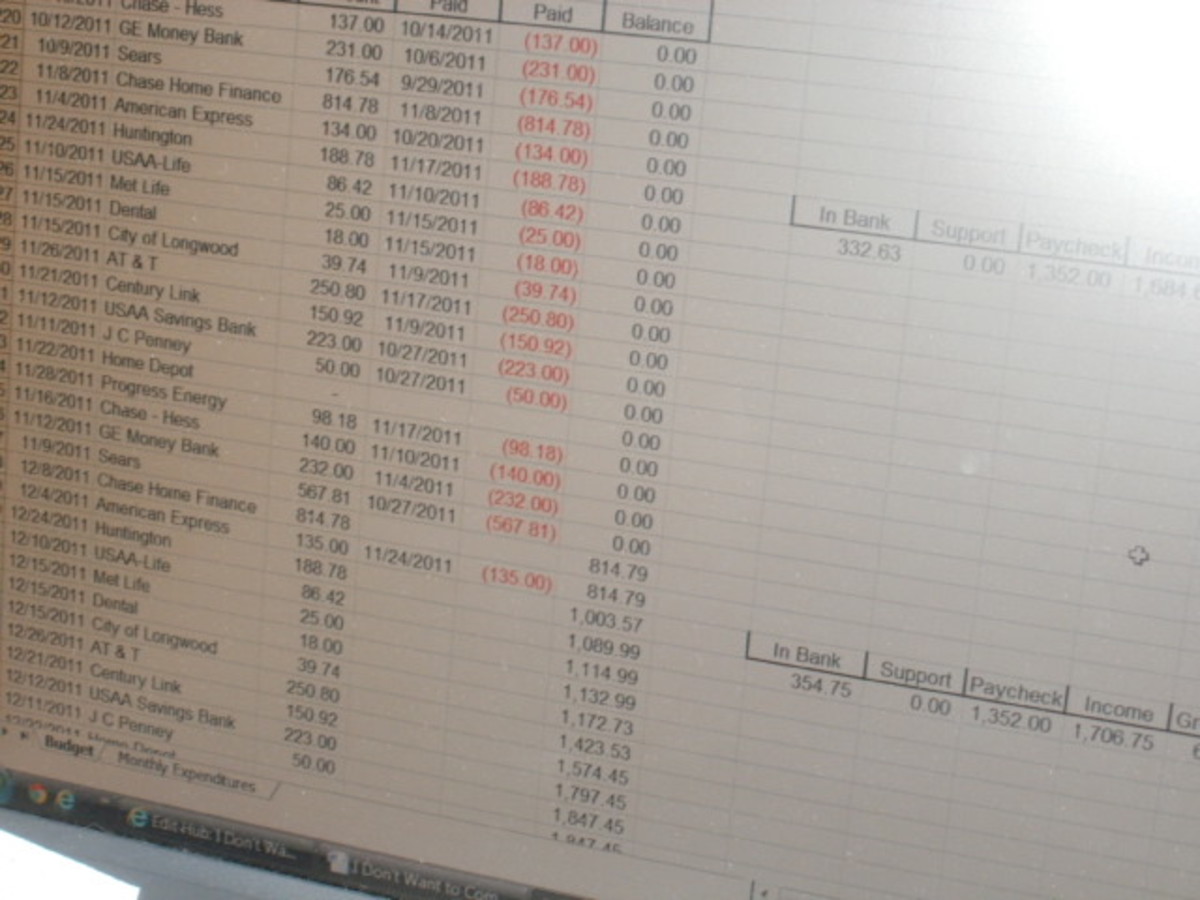Arguments on Marketing Fear: A Critical Analysis of Opinion and Evidence
“The greatest deception men suffer is from their own opinions” – Leonardo da Vinci
U.S.-Soviet tensions during the Cold War characterized global conflicts and changes post World War II; this set the stage for the political and economic struggles between the ideologies the have long separated the Western and Eastern worlds (Craig M., Graham W., Kagan D., Ozment S., Turner F., 2009, pp. 1051-1052). Since then democratization, globalization, and terrorism have shaped the post-colonial era, and resulted in worldwide clashes between civilizations and revolutions (Craig et al, 2009, pp. 1090-1091). The recent political thrashes in Syria and Egypt exemplify this ongoing struggle between ideologies (Goldman, 2013).
Amidst the conflicts that plague the modern world, divided political parties in the United States are finding themselves drifting further apart on issues ranging from environmentalism to Home Land Security. Some authors such as Frank Furedi, professor of sociology at the University of Kent, England, argues that the United States’ political parties are largely divided because they are driven by a fear of progress and change (Lamm R., Everett, J., 2007). Other authors such as Paul Rodgers, professor of peace studies at Bradford University, England, dispel the popular belief that the world is becoming a more dangerous place, and claims that the world is becoming more peaceful (Rodgers, 2005/2007). Authors such as David Myers, professor of psychology at Hope College in Holland, Michigan, flip popular preconceived notions of danger and rational fear upside down and highlights how the public fears the wrong things (Myers, 2003/2007). Naturally, each of these authors is writing to persuade an audience to see things their way by constructing their arguments on credible evidence in the form of facts, figures, and statistics. A persuasive essay can manifest biasness through the injection of too much opinions, prejudice authority, or sarcastic voice (Strunk W., White E., 1935/1999, pp. 79-80). Conducting a critical analysis of evidence and opinion in Furedi’s “The Market in Fear,” Rodgers’ “A World Becoming More Peaceful?” and Myer’s “Do We Fear the Right Things?” can illuminate the effectiveness of their influence on their reader’s perception on marketing fear to the public.
Readers ought to be aware while reading Furedi’s essay, “The Market in Fear.” His argument is built upon many generalizations empty claims, extreme examples, and a bias tone. For example, in paragraph number 5 Furedi says
Today, however, we appear to fear everything. One reason why we fear so much is because life is dominated by competing groups of fear entrepreneurs who promote their cause, stake their claims, or sell their products through fear. Politicians, the media, businesses, environmental organizations, public health officials, and advocacy groups are continually warning us about something new (Furedi, 2005/2007).
This entire paragraph but Furedi is invalid because he uses hasty generalizations, and does not include any tangible examples, facts, or figures to support his claim. In addition, he singles out entrepreneurs as his prime example of groups that cultivate fear into the public; perhaps this is a bias tone that undermines or exemplifies the exploitive nature attributed to a capitalistic society.
In addition, Furedi commits reductio ad absurdum[1] fallacies several times throughout his essay. The first example in paragraph 13, Furedi applies Thomas Hobbes’ philosophy on fear, which is characteristic of fears positive traits, to be representative of the entire cultural norm of the 16th century to the 19th century. Thus, Furedi commits a reductio ad absurdum fallacy because he is ascribing four hundred years of the cultural perception of fear across the Western world to one philosopher’s essay that praised the effects of fear. The second example in paragraph 36, Furedi attempts to support his claim that “In contemporary times, fear migrates freely from one problem to the next without there being a necessity for casual or logical connection” by using an extreme example of what a Southern Baptist leader said about Muslims and terrorism post-9/11 (Furedi, 2005/2007). Essentially, Furedi attempts to link this evidence to support the way people react to natural disasters, global warming, and politics, which is characteristic of committing reductio ad absurdum and non sequitur[2] fallacies.
Rodgers’ essay “A World Becoming More Peaceful?” begins with an excellent supporting arsenal of facts and figures from credible sources. He mainly supports his thesis that the world is becoming more peaceful with many eye-opening statistics from the Human Security Report (HSR). For example in paragraph 4, Rodgers explains that “the number of armed conflicts has decreased by more than 40 percent, and the number of major conflicts has declined by 80 percent,” and in paragraph 5, “the number of people killed in individual wars have declined dramatically in the past five decades; and that the number of international crises fell by more than 70 percent between 1981 and 2001 (Rodgers, 2005/2007). Rodgers scatters more statistical figures throughout the first half of his essay. They certainly add credibility and authority to his essay.
Even so, the second half of Rodgers’ essay, Two Sources of Identity and on, is exemplified with empty claims, hasty generalizations, and jumping to conclusions. For example, in paragraph 20, Rodgers makes an unsupported claim, absent of any facts or figures when he says “The threat to the United States’ superpower dominance leading to a “war on terror,” now approaching its fifth year, may actually be distorting its understanding of the global picture of increasing security” (Rodgers, 2005/2007). In addition, he injects his opinion in paragraph 22 when he claims
Second, the assessment of whether or not the world has become more peaceful needs to accommodate the greatest human test of all- the response to climate change and all the many new insecurities that will come in its wake if it is not brought under control. The “drying out” of the tropics and the impact of global warming on the polar icecaps, which now look increasingly possible, will overshadow every other issue of international security in the coming decades. The Huge pressure to migrate they are likely to bring is only one of their likely effects (Rodgers, 2005/2007).
Rodgers ironically commits an argumentum ad terrorem[3] with a hasty generalization that mankind’s greatest problem is global warming and it will overshadow all other international issues. This is a biased claim originating from mere speculation; in addition this claim is effective only because it instills fear in his audience rather than educating them with solid information. His appeal to fear is further exemplified because he does not support his claim with any studies, facts, or figures.
Myers’ “Do We Fear the Right Things?” is a well-written persuasive essay because it refrains from biasness and the injection of opinion, and it relies on facts and figures from credible sources. Through psychological science and many statistical comparisons, Myer’s explains how we overestimate fears such as flying in an airplane, and underestimate fears such as driving automobiles. For example in paragraph 4, Myers highlights the risks associated with driving and flying “Consider: The National Safety Council reports that in the last half of the 1990s Americans were, mile for mile, 37 times more likely to die in a vehicle crash than on a commercial flight” (Myers, 2003/2007). In addition, Myers explains why we our irrational fear of flying exceeds our desensitized fear of driving in paragraph 8 when he says “We fear what we cannot control… Driving we have control. Flying we do not” (Myers, 2003/2007).
Myers’ persuasive conclusion also rings true for readers today when he says “When terrorists strike again, likely where unexpected, we will all recoil in horror. But smart thinkers will also want to check their intuitive fears against the facts” in regard to the Boston Marathon bombings on April 15, 2013 (Myers, 2003/2007). The entire country was shocked in this tragic event when two Islamist extremists injured 280 and killed 5 people (Boston marathon terror attack fast facts, 2013). According to an article posted two days after this event “Boston Marathon Bombing and Every Day Terror in America” sheds light into the statistics of the situation by saying
Every year, 4,600 Americans are killed in work place related accidents. Every 28 hours a Black person is killed by the police, corrections officers, security guards, or vigilantes. Every year more than 30,000 people are killed by gun violence in this country. The odds of being killed by a terrorist are only 1 in 20 million” (Kimberley, 2013).
This article essentially addresses and reflects the irrational fears that the public was feeling nearly 10 years ago when Myers wrote “Do We Fear the Right Things?” in response to the attacks on 9/11.
According to teacher Rod Baird, persuasive writing is the most practical form of writing because it “gets you want you want” (Baird, 2006, p. 16). Furedi, Rodgers, and Myers ultimate goal for writing their essays was to influence their reader’s perception of public fears. Each author, to different degrees, was successful or unsuccessful depending on who well they supported their claims with solid evidence, and refrained from injecting opinions. In a few instances, authors committed fallacies, which can deteriorate an essay’s overall impact and credibility such as in Furedi’s “The Market of Fear,” and Rodgers’ “A World Becoming More Peaceful?” Ultimately, an author can achieve highly effective persuasive writing if it is objective, precise, and logical as Myers demonstrates in “Do We Fear the Right Things?”
References
Baird, R. (2006). A bare-bones guide to persuasive writing. Writing, 29 (3), 16. Retrieved from http://search.proquest.com.ezproxy.apollolibrary.com/docview/196499500?accountid=35812
Boston marathon terror attack fast facts. (2013). Retrieved from http://www.cnn.com/2013/06/03/us/boston-marathon-terror-attack-fast-facts
Craig M., Graham W., Kagan D., Ozment S., Turner F. (2009). The heritage of world civilization. (9 ed., Vol. 1, pp. 1051-1052, 1990-1991). Upper Saddle River, NJ: Prentice Hall.
Furedi, F. (2007). The market in fear. In Dynamic argument. Boston, MA: Houghton Mifflin.
Goldman, D. (2013). Syria and egypt can't be fixed. Retrieved from http://pjmedia.com/spengler/2013/06/18/syria-and-egypt-cant-be-fixed/
Kimberley, M. (2013). Boston marathon bombing and every day terror in america. Retrieved from http://www.globalresearch.ca/boston-marathon-bombing-and-every-day-terror-in-america/5333525
Lamm, R., Everett, J. (2007). The market in fear; A world becoming more peaceful?; Do we fear the right things?. In Dynamic argument. Boston, MA: Houghton Mifflin.
Myers, D. (2007). Do we fear the right things?. In Dynamic argument. Boston, MA: Houghton Mifflin.
Rodgers, P. (2007). A world becoming more peaceful?. In Dynamic argument. Boston, MA: Houghton Mifflin.
Srunk, W., White, E. B. (1999). The elements of style (4th ed., pp. 79-80). Boston, MA: Allyn and Bacon.
[1] Making an extreme example to support a reasonable argument: If A is true, then B must also be true (where B is the extreme of A)
[2] “Does not follow”; Conclusion does not follow from its premises: All As are Bs. C is a B. Therefore, C is an A.
[3] Appeal to fear: persuades audience through fear of the consequence.






